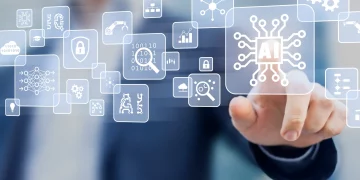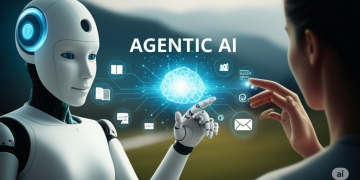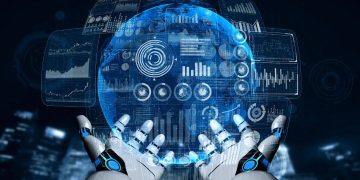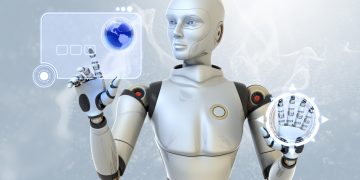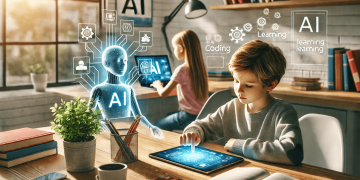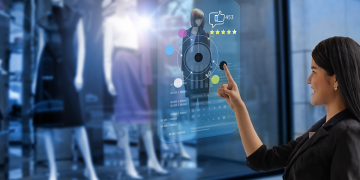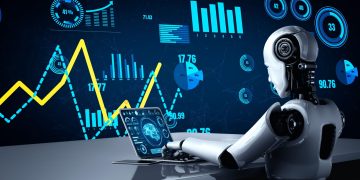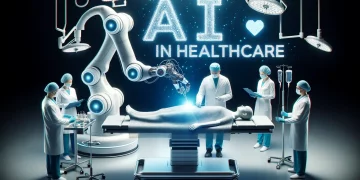In the digital economy, machine learning (ML) and big data are no longer just buzzwords—they are powerful forces driving fundamental changes across industries. Their convergence is not coincidental, but symbiotic: big data fuels machine learning with vast amounts of information, while machine learning unlocks the hidden value and predictive power within that data.
This fusion is creating a new paradigm of data-driven intelligence, reshaping how businesses operate, make decisions, and deliver value. From finance and healthcare to manufacturing and logistics, the integration of ML and big data is enabling faster, smarter, and more adaptive systems.
This article explores what the convergence of ML and big data truly means, how it’s already impacting industries, and what transformations we can expect in the coming years.
1. Why the Integration Matters: A Shift from Retrospective to Predictive Intelligence
Historically, big data systems were used primarily for descriptive analytics—understanding what happened through large-scale data processing, often using batch pipelines. Machine learning introduces a new capability: predictive and prescriptive analytics.
By integrating the two, organizations can move from answering:
- “What happened?”
- “How many?”
- “Where did it occur?”
To answering:
- “What’s likely to happen next?”
- “What should we do now?”
- “How can we optimize outcomes in real time?”
This leap is what turns passive data into actionable intelligence.
2. Key Drivers of Convergence
Several developments have enabled this integration:
a. Cloud Computing and Scalable Storage
Massive amounts of data are now accessible via scalable cloud platforms like AWS, Azure, and Google Cloud, enabling machine learning models to train and operate on real-time data streams.
b. Advanced ML Libraries and Tooling
Frameworks like TensorFlow, PyTorch, Apache Spark MLlib, and Scikit-learn provide robust ecosystems for building models that work directly on distributed, structured, or unstructured datasets.
c. Data Lakes and Feature Stores
Centralized architectures like data lakes (e.g., Delta Lake, Snowflake) and ML-specific feature stores (e.g., Feast, Tecton) enable seamless access to high-quality, labeled data for training and inference.
d. Edge and Real-Time Processing
The rise of IoT and edge computing means ML models can now be deployed close to where data is generated, enabling instant analysis and action, especially in industries like manufacturing, logistics, and energy.
3. How the Convergence is Transforming Industries
a. Healthcare
- Predictive models can analyze patient histories and real-time health data to forecast disease risk, personalize treatment plans, and detect anomalies (e.g., cancer detection, sepsis prediction).
- Big data from electronic health records, wearables, and genomics is enabling large-scale population health analysis, drug discovery, and remote patient monitoring.
b. Finance
- Fraud detection algorithms analyze millions of transactions per second to identify suspicious behavior in real time.
- Personalized financial services are powered by models trained on user behavior, credit histories, and macroeconomic data.
c. Retail and E-Commerce
- Customer segmentation, recommendation engines, and dynamic pricing rely on ML models trained on massive datasets of purchase history, clicks, location, and reviews.
- Inventory and demand forecasting are optimized by real-time sales data, weather patterns, and social media trends.
d. Manufacturing
- Predictive maintenance algorithms use sensor data to forecast equipment failure, reducing downtime and costs.
- Supply chains are optimized with real-time insights on demand, production capacity, and shipping logistics.
e. Energy and Utilities
- Smart grids integrate ML to balance load, predict demand surges, and manage energy distribution more efficiently.
- Renewable energy forecasting (e.g., wind, solar) is improved with ML models trained on weather and usage data.
4. New Business Models and Competitive Advantages
The fusion of ML and big data is not just enhancing existing operations—it’s creating entirely new business models.
a. Data-as-a-Service (DaaS)
Firms are monetizing proprietary data sets and ML capabilities by offering APIs and insights on demand.
b. Hyperpersonalization
Companies use real-time behavior data to personalize content, recommendations, and services at the individual level, increasing customer satisfaction and conversion rates.
c. Autonomous Systems
From self-driving cars to automated trading systems, intelligent agents trained on vast datasets are making real-time decisions without human input.
d. Predictive Business Operations
Dynamic pricing, resource allocation, and workforce planning are increasingly driven by ML models analyzing a continuous flow of internal and external data.

5. Technical and Ethical Challenges
Despite the benefits, integrating ML with big data presents significant hurdles:
a. Data Quality and Labeling
More data doesn’t always mean better outcomes. Dirty, inconsistent, or unlabeled data can mislead models.
b. Model Bias and Fairness
ML systems trained on biased datasets can reproduce or amplify social, racial, or gender biases—especially when dealing with sensitive demographic or financial data.
c. Data Privacy and Governance
The use of personal and behavioral data raises concerns around consent, GDPR compliance, and surveillance.
d. Scalability and Interpretability
As models grow more complex and data volumes grow, ensuring explainability and accountability becomes harder—but no less essential.
6. The Road Ahead: What’s Next?
a. Unified AI Platforms
Expect the rise of integrated platforms that combine data engineering, ML training, monitoring, and governance into seamless pipelines.
b. AutoML and MLOps
Automated ML model building and deployment pipelines will allow domain experts—not just data scientists—to leverage big data insights.
c. Real-Time Learning Systems
Adaptive systems will use continuous data streams to learn and adjust on the fly (e.g., fraud detection adapting to new scams instantly).
d. Synthetic Data and Simulation
To augment limited or sensitive datasets, synthetic data will be used to train models while preserving privacy.
e. Industry-Specific AI Stacks
Vertical-specific AI stacks (e.g., for fintech, biotech, logistics) will emerge with specialized data models, regulatory frameworks, and deployment tools.
Conclusion
The integration of machine learning and big data is more than a technical evolution—it is the engine of a new industrial transformation. By turning massive, messy data into predictive, adaptive intelligence, industries are unlocking unprecedented levels of efficiency, agility, and personalization.
But with this power comes responsibility. Organizations must ensure their systems are not only performant but also transparent, fair, and secure. Those who master the convergence of ML and big data—ethically and effectively—will lead the next wave of digital innovation.





